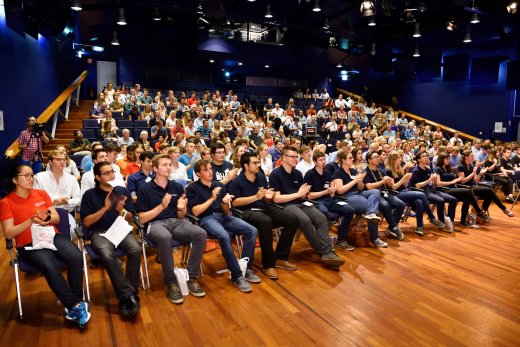22/09/2015
What is a molecular biosensor?
The field of molecular biosensing[1] started in the last century with the development of compact devices for enzymatic metabolite detection - mainly blood glucose sensing for patients with diabetes - and with devices for antibody-based detection of small molecules and proteins, e.g. detection of the hCG hormone as a biomarker for pregnancy. In recent years molecular biosensors have also become available for in-vivo monitoring of glucose in skin.
In spite of these advances, most medical biomarkers can still only be measured on large laboratory instruments, and near-patient tests - let alone devices for real-time monitoring - are not yet available. An important reason is that biomolecular measurements are intrinsically difficult: most biomarkers have low concentrations, biological samples contain a lot of substances that can interfere with measurements, samples can vary strongly between patients, measurements are sensitive to environmental conditions, etc. Therefore, mostly laboratory conditions, complex sample preparation procedures and large sophisticated instruments are needed to perform reliable biomarker measurements.
However science and technology are developing steadily and strongly, in areas such as micro- and nanotechnologies, biomolecular engineering and biochemistry, high-tech instrumentation and computational methods. New recognition and detection molecules are being designed, new ways to incorporate molecules in devices, new ways to transduce biomolecular interactions into chemical and physical signals, and new ways to detect these signals using miniaturized optics, electronics, mechanics, etc.
The increase of understanding and control enable steps to be made in analytical performance and miniaturization, driven by multidisciplinary teams that combine the required scientific and engineering skills. Many new technological concepts are being and will be developed. Over time, biosensor technologies will become more sensitive, more accurate, faster, more integrated, more user-friendly, available for more biomarkers, and more cost-effective.
We foresee a roadmap of challenges that need to and will be addressed in the coming years. The approach of SensUs is to select every year a well-defined technological goal that is to be targeted by the international teams. With the same functional end goal, the teams will develop their unique solutions and creative technological embodiments. At the contest all solutions will be shown, shared, appreciated, and discussed. In this way, SensUs will become a platform for learning, for the generation of novel solutions and for innovation in the field of molecular biosensors for healthcare applications.
|
Notes |
|
|
A biosensor is a compact device that interacts with a biological system to acquire a signal for diagnostic or monitoring purposes. A molecular biosensor is a biosensor with a molecular interaction as a central aspect. It is an analytical device with a molecular recognition element and with a transduction principle that turns the biomolecular interaction into a measurable signal. Molecular biosensors operate on samples taken from the body (in-vitro testing e.g. using a drop of blood) or are worn on or inside the body (for real-time in-vivo sensing). |

Facebook
YouTube
LinkedIn
Instagram